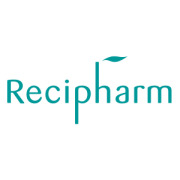Lyophilisation technology improving thermal stability and reducing cycle times, says Recipharm expert

Lyophilisation or freeze drying is an important means to improve thermal stability of a drug product, according to Thomas Becker, Quality Director and Qualified Person, Recipharm. This is particularly true for those that are thermolabile, such as mRNA vaccine candidates.
Speaking in the Learning Lab ‘Aseptic Manufacturing – Design of Lines for Filling and Lyophilisation’ at CPHI Worldwide, Becker said the technology was also cutting down on lyophilisation cycle times.
He discussed how the CDMO had been easily able to transfer the developed program for a COVID-19 mRNA vaccine candidate to the production scale, via a pilot development lyophilizer.
“We were able to develop the lyophilisation cycle for this vaccine candidate within a short period of time – two months – and we could also significantly reduce the lyo cycle time by about one third or 50 hours,” he said. “That’s a great efficiency gain.”
Becker also mentioned that there was still ongoing debate on how an aseptic filling line should look and where it should be located, with Restricted Access Barrier Systems (RABS) and isolator systems generally preferred now to classic cleanrooms.
“We do still have some classic cleanroom lines, but these are no longer really accepted by authorities and customers despite a very long history of successful aseptic processing,” he said. “A definite downside of this technology is that in case of interventions, you will lose product, whereas when you have RABS or an isolator, it is better because you can do interventions through gloves and no product has to be discarded.”
Becker commented that isolator systems had the added advantage of only needing a limited ‘Grade A’ area, while RABS and classic cleanrooms required a much larger aseptic area.
“There is quite a significant amount of Grade B area needed to surround a RABS filling line and for classic clean rooms, usually there is only limited campaigning possible,” he said.
When discussing the challenges faced by global CDMOs, Becker explained that these could be divided into three main segments: customer demand, competitive challenges and compliance.
He added that with customer demand becoming broader and more complex, global CDMOs must offer flexibility, a comprehensive scope of services, batch sizes, and end-to-end support for both product life cycle – from development to commercialisation – and batch life cycle -- from API to market release of the drug product.
About the Speaker
Thomas Becker is Quality Director and Qualified Person for vaccines at Recipharm’s facility in Wasserburg. Thomas, who also has a PhD in chemistry from the Friedrich-Alexander University in Erlangen-Nürnberg, has more than 20 years’ experience in the pharmaceutical industry, most notably in aseptic production o liquid and lyophilised injectable drug products and vaccines. Prior to joining Recipharm, he held several senior positions including site quality head and director of regulatory compliance over a span of 14 years.

Position your company at the heart of the global Pharma industry with a CPHI Online membership
-
Your products and solutions visible to thousands of visitors within the largest Pharma marketplace
-
Generate high-quality, engaged leads for your business, all year round
-
Promote your business as the industry’s thought-leader by hosting your reports, brochures and videos within your profile
-
Your company’s profile boosted at all participating CPHI events
-
An easy-to-use platform with a detailed dashboard showing your leads and performance